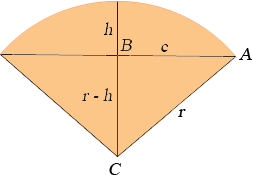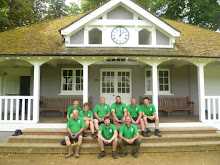 |
| Seed Sowing Kit |
Back in January the team began a project to clear an area of overgrown shrubs that bordered the north side of the sports field which was completed in three weeks, for the story so far see the following blog entries:
26th January 2016
'Removing The Large Laurel'
28th January 2016
'The Laurel Clearance Continues'
12th February 2016
'Laurel And Shrub Clearance Update'
Since February the old shrub and tree stumps have been ground out, the area levelled, nuisance weeds sprayed off and annual weeds hoed off. Yesterday four tonnes of top soil were spread over the cleared area and levelled in preparation for today's seed sowing. The original plan was to return the area to grass but there has been a change, instead of grass the new plan is for a wildflower strip. To create the strip the area has been measured, 100 metres by 4 metres, and a seed mix ordered. The chosen mix, from
Sherriff Amenity, is called
'Colour Splash 3 New Wave, a tall growing wildflower mixture which features orange tones and withstands heat and drought very well'.
 |
| Wildflower Seed 'Colour Splash 3 New Wave' |
Two 400gram tins of seed were ordered, each tin sufficient to cover 200m sq (the total area is 400m sq). To make it easier to sow the seed, and for a more even distribution, the area was split in to four, smaller, equal sections, 25m x 4 (100m sq) and each seed tin split in to two, 200grams (100m sq).
 |
| Wildflower Seed |
The wildflower seed mix is
- Cornflower - Centaurea Cyanus
- Sensation Cosmos Bipinnatus - Cosmos Bipinnatus
- Cosmos Sulphureus - Cosmos Sulphureus
- Garden Chrysanthemum - Chrysanthemum
- Coreopsis Tinctoria - Coreopsis Tinctoria
- Tithonia - Tithonia speciosa
- California Zinnia - Zinnia elegans
 |
| Wildflower Seed And Silver Sand |
In a bucket, an inert carrier, Silver Sand, was mixed with the seed (5kg of sand per 200grams of seed) to help distribute it more evenly.
 |
| Seed And Sand Mix |
By hand, the mixture was broadcast over each section and, when finished, gently raked in to the soil. With plenty of rain due in the next few days watering in wasn't deemed necessary.
 |
| Wildflower Strip Area |
 |
| Please Keep Off |
Germination is expected in the next 8-10 days, in the mean time signs have been put up along the newly sown area to protect the young seedlings as they emerge.
 |
| Colour Splash 3 New Wave |























































